Animal movement technologies have already significantly advanced our understanding of the natural world, from uncovering previously mysterious migration patterns and key movement corridors to demonstrating the impacts of anthropogenic pressures and climate change. Continuing advances in the development of technologies for collecting and transmitting bio-logging data, combined with the increased availability of high-resolution environmental data and analytical developments in movement modelling, are opening doors to novel applications. However, there are still major gaps in the space, including mobilizing movement data to translate data from tracking devices into insights for application in policy and practice. This group is a place for the animal movement community to connect and discuss our efforts to advance the field.
Resources for beginners
Learn about WILDLABS Animal Movement research projects
- MoveBON Initiative Announcement
- MoveBON Follow-Up Discussion
- Virtual Meetup Season 4: Tracking Progress (A WILDLABS research project on movement ecology)
Group curators
- @TaliaSpeaker
- | She/her
WILDLABS & World Wide Fund for Nature/ World Wildlife Fund (WWF)
I'm the WILDLABS Research Specialist at WWF-US



- 23 Resources
- 62 Discussions
- 25 Groups
- @lhughey
- | she/her
Smithsonian Conservation Biology Institute
I am an ecologist and program manager with experience leading collaborative research projects in international settings. I specialize in the application of animal tracking data to conserve migratory species on a changing planet.



- 6 Resources
- 10 Discussions
- 3 Groups
Movement ecologist using conservation technology to study the behaviors of animals in the wild and understand how they cope with change to most effectively address conservation- and conflict-related issues.


- 0 Resources
- 9 Discussions
- 11 Groups
Senior Wildlife Research Scientist
- 0 Resources
- 0 Discussions
- 7 Groups
- @ahmedjunaid
- | He/His
Zoologist, Ecologist, Herpetologist, Conservation Biologist





- 63 Resources
- 7 Discussions
- 26 Groups
- @eugeniabonetti
- | She
PhD Student at Universidad Nacional de Mar del Plata
- 0 Resources
- 0 Discussions
- 1 Groups
Max Planck Institute of Animal Behavior
Project leader of MoveApps | Movement ecology

- 1 Resources
- 5 Discussions
- 5 Groups
- @theindieg
- | he/him
Running a small electronic engineering company focused on large scale sensor networks. We have interest in bioacoustics with bat and bird recorders, as well as a host of environmental sensors.


- 0 Resources
- 16 Discussions
- 6 Groups
Cellular Tracking Technologies
Biz Dev at Cellular Tracking Technologies



- 5 Resources
- 73 Discussions
- 4 Groups
R & D Tech | Industrial Designer | Wildlife Management Technology



- 0 Resources
- 91 Discussions
- 6 Groups
La Trobe University
Zoologist & Conservation biologist
- 0 Resources
- 1 Discussions
- 5 Groups
Spatial ecologist focused on landscape ecology and spatial modeling of biodiversity

- 0 Resources
- 0 Discussions
- 4 Groups
- @Britneecheney
- | her/she
My name is Britnee Cheney. I am a keeper and trainer for three North American River Otters at an aquarium in Utah. I have recently started a conservation program for this species in the wild and am looking for resources and mentors to help me with my camera trapping.


- 0 Resources
- 13 Discussions
- 8 Groups
- @Robincrocs
- | He/Him//El//Ele
Wildlife biologist, works with Caimans and Crocodiles
- 0 Resources
- 0 Discussions
- 15 Groups
Hi together, I am working on detecting causalities between land surface dynamics and animal movement by using satellite-based earth observation data. As this is might be your expertise I kindly ask for your support...
8 May 2025
A Post-Doc position is available to join the team coordinating the Urban Exploration Project – a collaborative initiative in partnership between the University of St. Andrews and the National Geographic Society.
2 May 2025
The Convention on the Conservation of Migratory Species (CMS) is seeking information on existing databases relevant for animal movement. If you know of a database that should be included, please complete the survey to...
30 April 2025
We are hiring for a customer support / marketing specialist.
20 February 2025
We look for a person with programming skills in R and/or Python.
4 February 2025
Are you interested in developing new 3D motion capture techniques to for measuring super fast wildlife like cheetahs? Are you interested in working with fusing exciting technologies such as event cameras, audio and...
3 February 2025
This leads to an exciting blog we did recently, it also includes a spatial map indicating elephant movement tracks of an orphaned elephant who self released himself into the wild (Kafue National Park). Cartography was...
28 January 2025
This is a NASA funded position that is part of a team creating a Digital Twin for African forests.
15 January 2025
seeking BSc student interested in a Master project involving analysis of a large GPS dataset of houbara movements
15 January 2025
Come along to the first season of Behind the Buzz, where we’ll bring in experts to break down the basics of global conservation policy frameworks through the lens of animal movement and explore how our community can...
7 January 2025
Join the San Diego Zoo Wildlife Alliance as a Postdoctoral Fellow! Lead groundbreaking bioacoustic and ML research to conserve burrowing owls in SoCal.
26 November 2024
The Smithsonian’s National Zoo & Conservation Biology Institute is seeking two Post-doctoral Research Fellows to advance research in the spatial ecology and conservation of bustard species with a special focus on...
11 November 2024
July 2025
event
August 2025
event
October 2025
event
November 2025
February 2025
event
event
January 2025
event
91 Products
Recently updated products
| Description | Activity | Replies | Groups | Updated |
|---|---|---|---|---|
| Thanks so much!! |
|
Acoustics, AI for Conservation, Animal Movement, Camera Traps, Community Base, Data management and processing tools, Drones, eDNA & Genomics, Emerging Tech, Open Source Solutions, Geospatial, Software Development | 2 years 7 months ago | |
| Done lots of this over the years and it depends on the species really. If you want incubation behaviour and hence success or otherwise using temperature then the Thermocron... |
|
Animal Movement, Sensors, Build Your Own Data Logger Community, Camera Traps | 2 years 7 months ago | |
| I don't think KEH would influence accelerometry at all.One other way to think about it is - the KEH is a movement sensor itself.The GPS is quite a severe factor in the energy... |
|
Animal Movement, Emerging Tech, Sensors | 2 years 8 months ago | |
| Hi all,There's a rare opportunity to acquire free (only postage and packaging is payable) GPS biologging hardware to trial the new... |
|
Animal Movement | 2 years 9 months ago | |
| Hi all!Last week we introduced you to our first WILDBEAR Awardee, Alyssa Bohart. We hope you enjoyed learning more about Alyssa's work with... |
|
Animal Movement, Community Base | 2 years 9 months ago | |
| @gracieermi & I are happy to announce the latest update to the Conservation Tech Directory, bringing our total resources in the... |
|
Acoustics, AI for Conservation, Animal Movement, Camera Traps, Community Base, Data management and processing tools, Drones, eDNA & Genomics, Geospatial, Software Development | 2 years 10 months ago | |
| its nylon rubber material |
|
East Africa Community, Animal Movement | 2 years 10 months ago | |
| Hey all!I'm well into my journey into the field of conservation now, after volunteering and freelancing for a couple of different... |
|
Animal Movement, Community Base, Open Source Solutions | 2 years 11 months ago | |
| A bit opposite of what you're looking for but according to this, the share of non-NFC enabled phones was 10% in 2020. They don't state their source unless you pay, but I suspect... |
|
Animal Movement, Emerging Tech | 2 years 11 months ago | |
| Hi Max, Well firstly, welcome! This is a great intro - I'm looking forward to having a poke around these links and reading more about your work. Sounds like you might well be... |
|
Animal Movement | 2 years 11 months ago | |
| We are still running this grant program albeit with subtle changes to improve the hardware/service agreement (in your favor). If you want to build your own tag, have a... |
|
Animal Movement | 2 years 11 months ago | |
| Hi Truphena, Firetail is designed with animal telemetry in mind. But, you could import any kind of data that features latitute, longitude and some kind of ID (plus whatever... |
|
Animal Movement | 3 years 1 month ago |
GPS Tracker For Wildlife
27 February 2025 12:13pm
2 March 2025 11:42am
Hi Herhanu , appreciate for your valuable feedbacks.
- can you explain what type of release mechanisim do you mean , picture will be much helpfull . do you mean with a remote release mechanisim activates and release the tracker from crocodile collar?
- how far data need to be sent ? with a mesh network of Loko receivers wide range of area can be covered i guess.
- long distance transmission is very challanging when transmitter is very close the ground , on crocodiles especially.
for what purpose do would you use accelerometer data? is there any specific use case?
Cheers, )
2 March 2025 11:55pm
Sure, Akio! Happy to answer!
1. Yes, something like that. The few existing i guess applied already for GPS collar (literally collar) that usually for big cats and some other big mammals. There is also GPS tag for Cetaceans that can pop up, but its only remained with the animals several days CMIIW (eg see links below)
link 1
2. I guess it depends on your research questions or project objectives. But for crocodile they can have vast home range from 100 ha to 10,000 ha (depends on species). For my species, it at least uses 500 ha of area, and the farthest between points can be 15km apart.
3. accelerometer, especially in crocodile can give insight about their movement ability. As they can random as they can be - or being a statue for hours (like when you look at crocs in the zoo). Of course this would depends on your objectives.
Hope this helps!
Cheers~
Building flexible antennas for telemetry radio
10 October 2024 5:59am
21 October 2024 3:01pm
This is very cool Chittakon! I have about approximately 1000 measuring tapes lying around in my garage that would be perfect for this (and if I happen to have to measure something in the field I can!)! An no more fighting my way through the bush with solid Yagis!!
Cheers,
Rob
2 March 2025 9:07am
This is great, I am looking at making a 173mhz flexible aerial and was wondering whether you have the spec needed for this at all?
Thanks!
2 March 2025 10:29am
I would simply scale the dimensions (150/173=0,87) making the antenna smaller, but keep the feeding (1cm, 9 turns, etc) the same.
The 100KB Challenge!
7 February 2025 11:47am
20 February 2025 9:13am
Nice one - what kind of thing would you use this for?
~500mA peak current, it has a similar power profile as the current RockBLOCK product, in that it needs lots of juice for a for a small period of time (to undertake the transmission) we include onboard circuitry to help smooth this over. I'll be able to share more details on this once the product is officially launched!
20 February 2025 9:13am
~500mA peak current, it has a similar power profile as the current RockBLOCK product, in that it needs lots of juice for a for a small period of time (to undertake the transmission) we include onboard circuitry to help smooth this over. I'll be able to share more details on this once the product is officially launched!
20 February 2025 9:31am
Hi Dan,
Not right now but I can envision many uses. A key problem in RS is data streams for validation and training of ML models, its really not yet a solved problem. Any kind of system that is about deploying and "forgetting" as it collects data and streams it is a good opportunity.
If you want we can have a talk so you tell me about what you developed and I'll see if it fits future projects.
All the best
WILDLABS Behind the Buzz: Country-Level Applications
 Talia Speaker
and 1 more
Talia Speaker
and 1 more
24 February 2025 8:49pm
External GPS trackers for large snakes
21 January 2025 3:55am
24 January 2025 3:18pm
Hi @RuSomaweera I haven't tracked snakes and would be interested to hear about any appropriate approaches too! I found this paper you might've already seen by Christensen et al. (2024) discussing attachment methods for snakes more generally (from my quick scan, I don't think it covers species such as anacondas in great detail though). Only one study that used an external GPS system met the reviwers inclusion criteria (by Gerke et al. 2021), which appeared to involved duct tape and super glue and this device from Ecotone. There's a picture on page 547 of the article. It looks as if the tracking times averaged 19 days and ranged from 10-28 days. Perhaps a more flexible and water-ready variant of this might be something like a neoprene 'sleeve' that can be fitted around the body of the snake with the GPS device attached to the sleeve? And perhaps some sort of medical-grade silicone adhesive would be better able to stick to the snakes skin? I am not sure if it would be appropriate or not, but I found this article discussing a type of medical silicone called 'BioAdheSil'. Perhaps you could discuss it with the authors? Anyway, looking forward to other responses and information you gather!
Cheers,
Rob
13 February 2025 10:40pm
Not with GPS; however, we could set up a node grid where you can localize their movement within the grid space. I don't know how much a snake moves though, so that would have to be taken into account of course.
CTT Node™ Version 3.0 with dual frequencies (note: power source sold s – Cellular Tracking Technologies
The new CTT Node 3.0 is the next evolution in radio telemetry, while providing consistency for those already using nodes in their research. You spoke, and we listened. While previous nodes worked incredibly well in areas where full sun was plentiful, having the solar panel directly atop the case has its limitations
Tutorial: Synchronizing Video Resources with Accelerometer Data
10 February 2025 12:06pm
13 February 2025 2:08pm
Short update: the latest version 13.0.9 of Firetail is now available from https://www.firetail.de
Collecting interesting resources to visualise spatio-temporal data from wildlife observations
9 February 2025 12:21pm
AI for Bird and Bat Recognition
7 February 2025 11:57am
7 February 2025 5:06pm
Hi Lorenzo,
I highly recommend the OpenSoundscapes package (developed by the Kitzes Lab at U Pittsburgh) - there are workflows to build your own CNNs there, the documentation is really thorough, and the team are very responsive to inquiries. They also have a bioacoustics 'model zoo' that lists relevant models. The Perch model from Google would be good to look into as well.
Some recent papers I've seen that might also be worth checking out -
- Advanced montane bird monitoring using self-supervised learning and transformer on passive acoustic data
- A good horizon scan paper - The potential for AI to revolutionize conservation: a horizon scan
- Challenges and solutions for ecologists adopting AI
- And perhaps not directly related, but a new framework for deploying edge models onto recorders was just released - acoupi: An Open-Source Python Framework for Deploying Bioacoustic AI Models on Edge Devices
Hope that helps a bit!
WILDLABS Behind the Buzz: Data and Information Access
 Talia Speaker
and 1 more
Talia Speaker
and 1 more
6 February 2025 5:56pm
Technical Assistant (m/f/d) | Moveapps
4 February 2025 8:32am
UK Home Studentship: Chasing the Cheetah: Pioneering Multi-Modal Sensor Fusion in the Wild
3 February 2025 4:34pm
Webinar: Wildlife Drones’ Dragonfly – Revolutionizing VHF Tracking Technology
3 February 2025 4:31am
The transmission range of animal tracking tags.
16 December 2024 1:13pm
10 January 2025 1:41pm
There was research on this in the very early days of VHF radio tracking. I presume what you are interested in is the period between audible bleeps vs the easeof detecting a mximum as an antenna is rotated to get a directional fix. If memory serves the optimum between battery life and ease of use was either an interval of 0.8s or a frequency of 0.8 Hz (so an interval of 1.2 s). The low end of your adjustment range would be midway between those two - the res tof the range would be very hard to use.
10 January 2025 4:06pm
Hi Chittakon,
I think an 'ideal' optimization between transmission interval and battery life would depend on the application. As I think Peter has indicated, longer transmission intervals could make it very difficult to determine direction, particularly on a moving animal. If you were not trying to find direction and/or locate the transmitter - maybe just detecting presence or absence - then a longer interval could work. cheers
29 January 2025 10:43pm
Choice of pulse interval on VHF transmitters really comes down to how mobile your study animal is and how complex the tracking environment is.
I have used pulse intervals down to 2 seconds on animals that spend a lot of time sitting still. This does save on power but if you are used to a faster pulse interval, it can be a real lesson in patience when you are trying to get an accurate bearing on the transmitter. For animals that are constantly on the move, don't even think about going slower than 1 second, particularly if the transmitter is likely to be intermittently blocked by habitat features.
Other ways of saving power can be to have periods when the transmitter is scheduled to sleep (when you are unlikely to be tracking) or to have bursts of pulses (say 1 minute on, one minute off).
Another important feature to consider is ensuring that the transmission has a stable pulse strength and frequency. There is nothing as frustrating as a transmitter that fluctuates in signal strength.
Collaring Elephants and Post Release Monitoring
28 January 2025 3:16pm
CCTV or camera trap for 24/7 video recording
8 January 2025 12:01pm
11 January 2025 4:30pm
BTW, on this subject. I've developed the 24/7 video recorder part for this now. It works really well. It saves as .mov files that play on all platforms, Linux, Mac and Windows.
13 January 2025 6:21pm
The thermal recordings in this video were recorded with it
24 January 2025 12:34pm
Hi,
I am using these for my current project:
They seem to be of good quality and support offline SD card storage. These run on 5V/1A. You should be able to run them for about two days on a 45 or 50,000mAh powerbank.
There should be UK versions of these.
However, like all CCTV manufacturers (atleast the ones i checked), downloading the continuous recordings isn't as easy as plugging in the SD card into your computer and copying the files. The video files are deliberately made hard to read. Everything is through their app. You can download events (movement/sound) captured by the cameras though.
WILDLABS Behind the Buzz: Translating Science to Policy
 Talia Speaker
and 1 more
Talia Speaker
and 1 more
22 January 2025 12:35am
Data science/analyst interested in volunteering for research or app development
17 January 2025 5:28am
PhD Position in Movement Ecology of Forest Elephants
15 January 2025 8:43pm
Master Project: Individual Differences in Movement Strategies of Captive-bred and Wild-born North African Houbara Bustards
15 January 2025 10:10am
Thesis Collaboration
4 January 2025 5:15pm
7 January 2025 12:32pm
Hi Simon,
Did you already contact INBO? Both biologging and citizen science are big themes at INBO. Last year we had a master thesis on camera trapping invasive muntjac. You can send me a private message for more info!
14 January 2025 3:30pm
Hi Simon,
We're a biologging start-up based in Antwerp and are definitely open to collaborate if you're interested. We've got some programs going on with local zoo's. Feel free to send me a DM if you'd like to know more.
15 January 2025 8:30am
Hi Simon,
We (Reneco International Wildlife Consultants) have an ongoing collaboration with a local University (Abu Dhabi, UAE) for developing AI tools (cameratrap/drone images and video analyses) and biomimetic robots applied to conservation (e.g https://www.sciencedirect.com/science/article/pii/S1574954124004813 ). We also have a genetic team working on eDNA. Field experience could be possible, in UAE or Morocco.
Feel free to write me back if you may be interested and would like to know more
Webinar: Drone-based VHF tracking for Wildlife Research and Management
9 January 2025 11:45pm
WILDLABS Behind the Buzz: Key Policy Frameworks
 Talia Speaker
and 1 more
Talia Speaker
and 1 more
7 January 2025 11:17pm
Behind the Buzz Season 1: From Data to Decisions
 Talia Speaker
and 1 more
Talia Speaker
and 1 more
7 January 2025 11:15pm
Video evidence for the evaluation of behavioral state predictions
17 December 2024 11:02am
19 December 2024 11:53am
Currently, the main focus is visual footage as we don't render audio data in the same way as we do for acceleration (also: the highly different frequencies can be hard to show sensibly side by side).
But In this sense, yes, the new module features 'quick adjust knobs' for time shifts: you can roll-over a timestamp and use a combination of shift/control and mouse-wheel to adjust the offset of the video by 1/10/60 seconds or simply enter the target timestamp manually down to the millisecond level. This work can then and also be saved in a custom mapping file to continue synchronisation work later on.
19 December 2024 12:59pm
but no "time scaling" adjustments to adjust a too "slow" or too "fast" video ?
19 December 2024 4:07pm
No, not yet. The player we attached does support slower/faster replay up to a certain precision, but I'm not sure that this will be sufficiently precise for the kind of offsets we are talking about. Adding an option on the frontend to adjust this is quite easy, but understanding the impact of this on internal timestamp handling will add a level of complexity that we need to experiment with first.
As you said, for a reliable estimate on this kind of drift we need at least 2 distinct synchronized markers with sufficient distance to each other, e.g. a precise start timestamp and some recognizable point event later on.
I perfectly agree that providing an easy-to-use solution does make perfect sense. We'll definitely see into this.
Firetail 13 - now available
10 December 2024 10:55am
13 December 2024 3:31am
Thank you so much for looking into this issue quickly! Much appreciated.
17 December 2024 10:40am
I promised to keep you updated, and the article is now available here:
17 December 2024 10:42am
and a short contribution in this e-obs setup, where we used Firetail VideoSync to analyze motion-triggered camera footage:
Integrating wildlife tracking with other technologies
7 January 2016 12:21pm
27 June 2016 3:59pm
Hi Paul,
I just remembered another one for the list. @BethClark is taking some really cool environmental readings for seabirds - Gannets - basically to build a picture of their lives in 3D. She talks about it on her blog here.
A few excerpts:
Electronic devices are attached onto the birds to record their behaviour: GPS, altimeters, accelerometers and dive recorders. The key will be to use multiple loggers on the same bird to record their flights in great detail. The GPS tracking project has been going on Grassholm for a few years now and we are building up a good picture of where they tend to forage.
The altimeters show the height above the sea, which gives us 3D tracks of the birds’ movements – very cool! The higher you are, the further you can see, but the more difficult it is to pick up scents from the sea. We will find out if these 3D help us pick out foraging behaviour and see how they actually find fish (and fishing boats) in a huge and seemingly featureless ocean.
Dive recorders show the timing and depth of the famous torpedo plunge dives, which will let us know when the birds have successfully found a fishing ground.
The accelerometers measure acceleration in 3 directions, showing even a single wing flap. This will help us to measure how much effort the bird are putting in when they travel and forage, which is very important for trying to figure out how they decide where to go. We will also be able to identify other behaviours, such as telling apart high-speed plunge diving from a slower dive made from the surface.
I think altimeters and dive recorders might be new ones for your list. Beth's here on WILDLABS.NET (and has promised a nice case study for our Resources area), so I think she'd be delighted to answer any questions you might have.
Cheers,
Steph
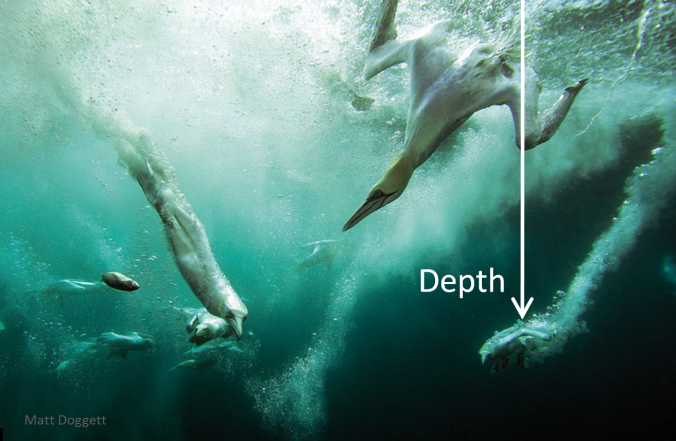
16 August 2016 10:37am
Hello again!
An interesting paper exploring the new technologies being used to study cetaceans has a section devoted to what they term high-resolution multisensor tags (page 4).
As with @BethClark 's work above, the questions that arise when studying marine mammals bring another dimension into what information we might require sensors to collect. For example:
Among cetaceans, there are two suborders: Odontocetes (toothed-whales) and Mysticetes (baleen whales). In general, toothed whales and dolphins use high-frequency acoustics for interanimal communication and feeding. In the marine environment, where sight is limited, sound propagates extremely well and all marine mammals communicate primarily through acoustic cues. Similar to bats, toothed whales and dolphins feed via high-frequency sound production known as echolocation, where acoustic signals reflect off of targets and the returning echoes can be translated into information on the environment or potential prey. For many years, independent passive acoustic recorders have been used to study the vocalizations of marine mammals. However, the incorporation of acoustic recorders (hydrophones) into animal-borne tags has only occurred in the past 20 years (Fletcher, Le Boeuf, Costa, Tyack, & Blackwell, 1996). The information that is recorded on the sensors in these tags (e.g. acoustic, movement) can be used to determine the frequency and acoustic structure of vocal behaviours that occur concomitant with motor behaviour, for example, echolocation signals during feeding events (Madsen, De Soto, Arranz, & Johnson, 2013) or contact calling while diving ( Jensen, Marrero Perez, Johnson, Aguilar Soto, & Madsen, 2011). Echolocation ‘clicks’ and ‘buzzes’ have been used from animal-borne tags to study the foraging behaviour of a wide range of odontocetes, from the small harbour porpoise, Phocoena phocoena, to the largest, the sperm whale (Fais et al., 2015; Wisniewska et al., 2015). This information has provided critical data on the feeding depths, frequency, timing and prey types targeted by different species and the behaviours associated with foraging (Johnson, de Soto & Madsen, 2009). These insights into feeding behaviour have recently been used to help determine foraging performance and foraging ecology (Watwood, Miller, Johnson, Madsen, & Tyack, 2006), as well as the energetic consequences of disturbing this behaviour (Miller et al., 2009). These new data products are ripe for linking to conservation efforts such as the individual and population consequences of human activities disrupting these behaviours (e.g. the use of naval sonar and seismic surveys). We explore below the tools produced, as well as new ones in development, to forge these links.
You have already identified sound in your original list, but I think the use of hydrophones with tags is an interesting addition - an example that didn't immediately spring to mind (at least for me), when I thought about the list.
Cheers,
Steph
In Press: Nowacek, D. P., et al., Studying cetacean behaviour: new technological approaches and conservation applications, Animal Behaviour (2016), http://dx.doi.org/10.1016/j.anbehav.2016.07.019
14 December 2024 12:18am
Hi Both of you,
Just a quick note now. Very interesting articles and topics found and discussed here. In my work with biophysical aspects of cheetahs I will review these things you have written. Thank you very much. Followed here from the sidelines
BR Henrik
Human mobility data
13 December 2024 4:09pm
Tracking orangutans
29 October 2024 3:15pm
6 December 2024 12:59pm
Depending on what you really need, you might have different options. I don't think collar/bracelet for great apes is currently resolved reliably, and could pose risks to the animals. Implantable transmitters are one option but more invasive. I think Chris Walzer (currently at WCS) has done some initial work on implanting orangutans (or gibbons), but that was quite some years ago. Others might have done it since as well. FWIW we have implanted captive chimpanzees with subcutaneous transmitters for other reasons and some have removed/damaged it, so that's a risk. Intraabdominal might be another (though even more invasive) option.
Is visual observation an option? This is well used in many species, though might be very costly/labour intensive. I have been involved in a project with howler and spider monkey where this has been used successfully, happy to put you in touch with them.
If your questions is primarily absence/presence of certain individuals, you could also try DNA based methods? And someone suggested below individual ID from video/pictures, this has been done in captive great apes, so it is an option, but you still need to get the shots in the first instance, so probably not many advantages over manual monitoring methods.
10 December 2024 6:46am
Our city-neighbours Robotto are a Drone AI-software company and have an ongoing animal tracking projects in Thailand, Australia, and Greenland (probably more by now) in co-op with WWF, using drones.
Give them a look! I know Kenneth, their CEO, pretty well so can match you two.
A rough explanation of how the tracking process happens is:
A forest ranger brings a suitcase with a drone to a watchpoint, pilots the drone around the area for 30-50 minutes while monitoring detections real-time on the provided screen.
Have seen it live in Thailand, it was impressive! :)
13 December 2024 3:44am
In a recent call with researchers in Thailand. They have mentioned that they use passive chip readers to log data about chipped animals as they pass by.
Looking for advise on a suitable VHF receiver
25 November 2024 7:52pm
2 December 2024 10:13pm
Thanks so much Robin for the contact information. Very useful!
Ravi
3 December 2024 5:35am
Hello @robbiemp
My method may not be the best at the moment, but I’ll share the results from my previous tests. Here’s what I’ve tested: “DIY using SDR connected to a smartphone as a radio telemetry receiver.”
I have a VHF receiver that works with SDR and an Android smartphone. I’ve tested it with a VHF tag that I built myself, "My VHF Telemetry Tag Building Project From Scratch."
It depends on whether you need data or just audio. If you need data, SDR may not perform very well. But if you’re just after audio signals, it can work similarly to a regular VHF receiver. By using a Yagi antenna and connecting the SDR to the smartphone, it can work for any frequency range you want. I used 148-151 MHz, but you can use more than that.
Please understand that it works similarly to a commercial VHF receiver, but it may not be as good as the ones available in the market due to various limitations. However, it can still be used. I tested it with a Yagi antenna that I made myself (but if you already have an antenna, you can use it too), and I was able to detect my VHF tag from a distance of about 1.2 kilometers and 800 meters for the VHF tag I received from @Rob_Appleby . This is just a rough test.
If you need a receiver that can operate across a wide range of frequencies, I think the RTL-SDR would be a good option as well.
This may not be the best method, but it works just fine. Thank you, and if you have any questions, don’t hesitate to ask me.
10 December 2024 10:07am
Thanks so much Chittakon. I have ordered the parts, and will be trying the phone method.



















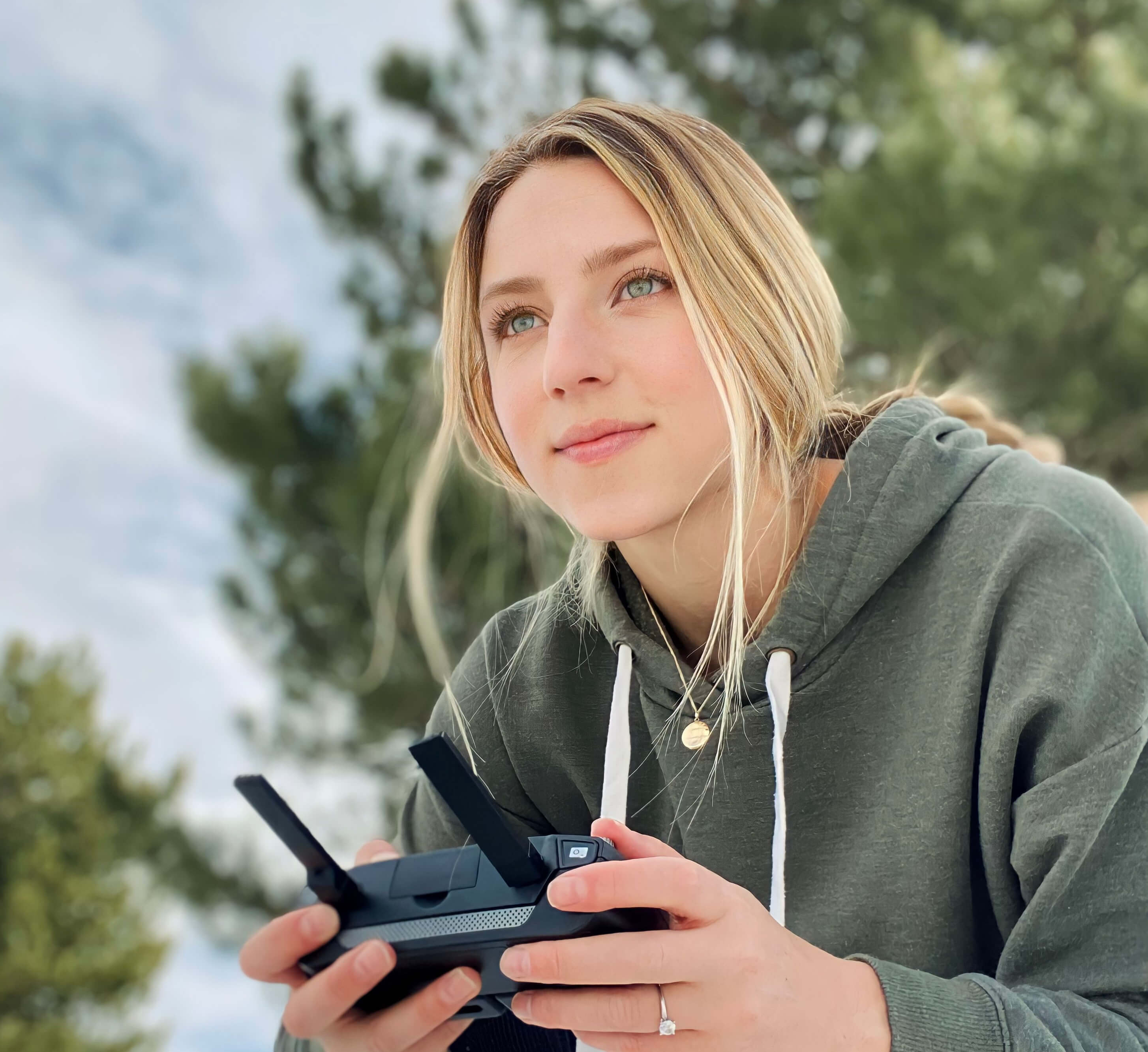












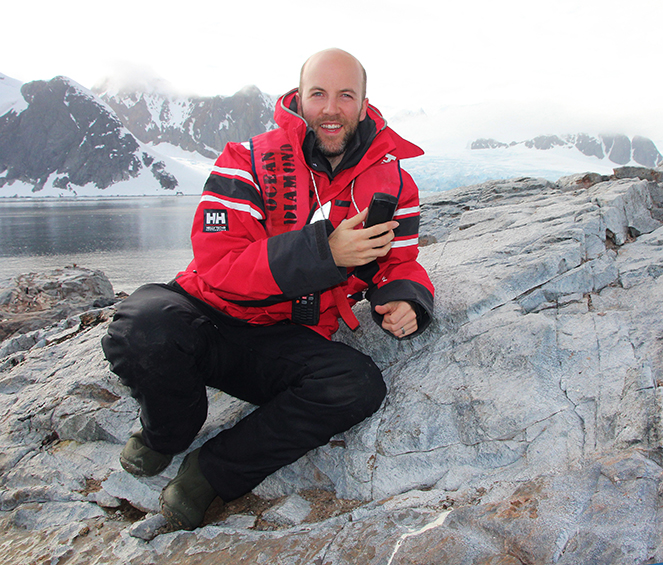

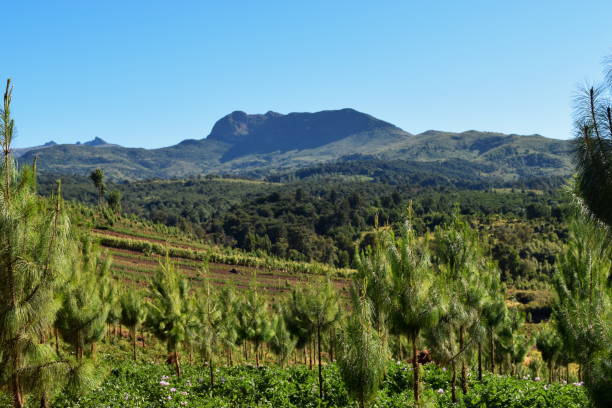










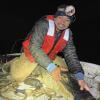
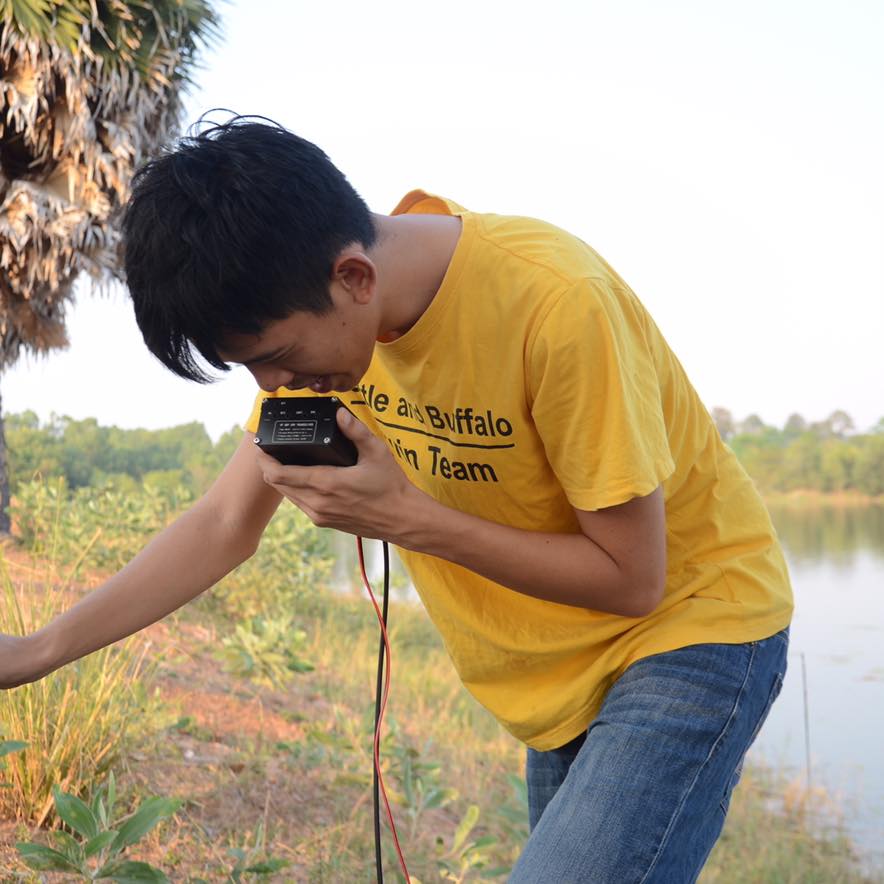

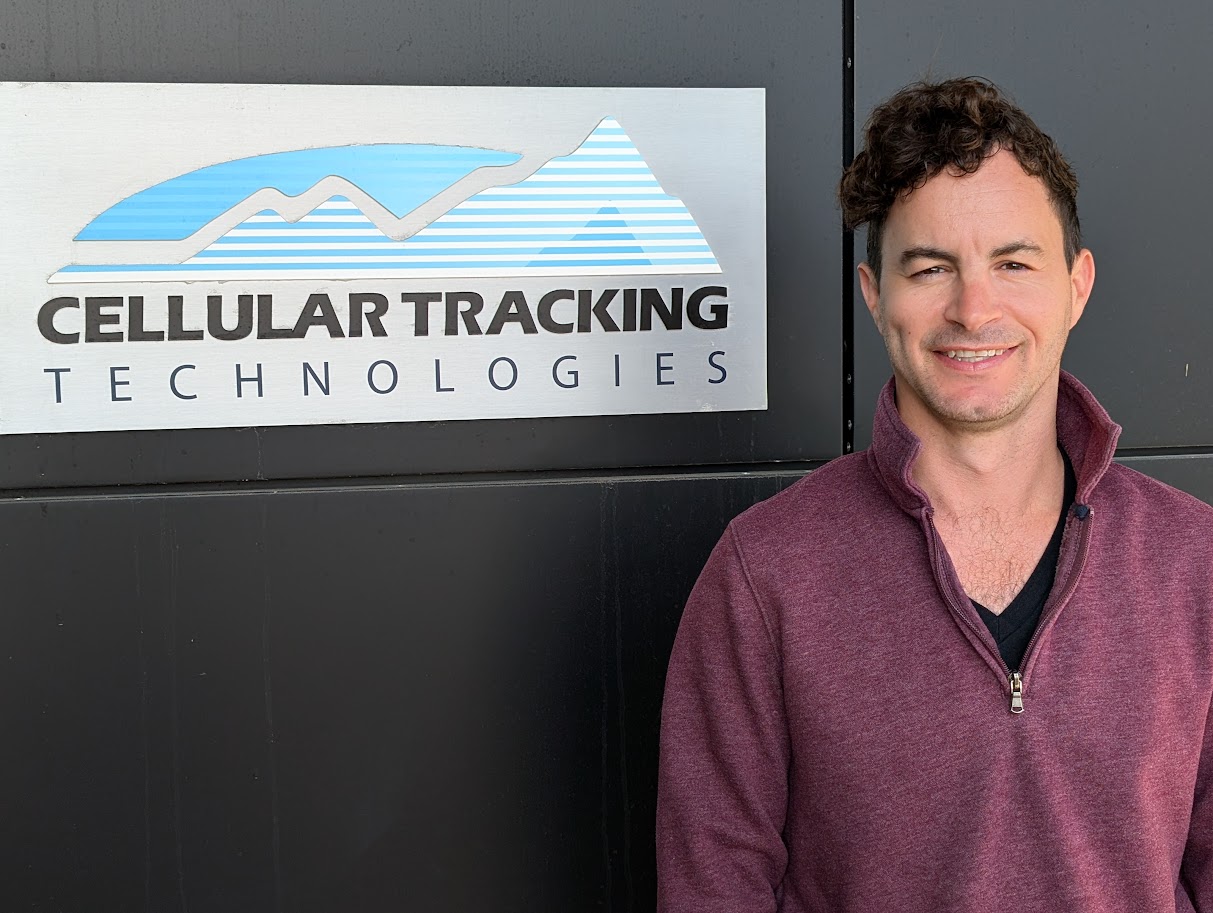


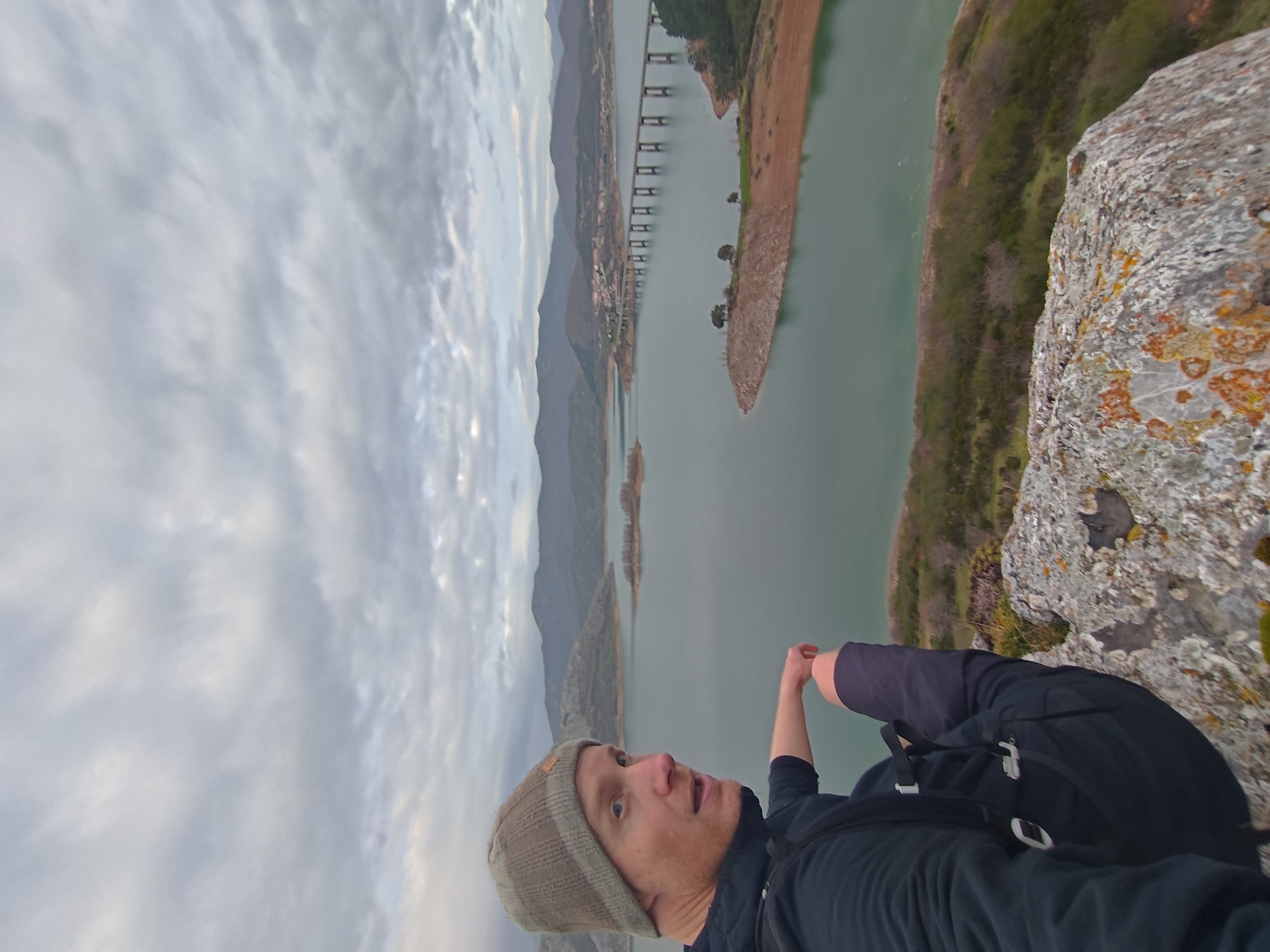



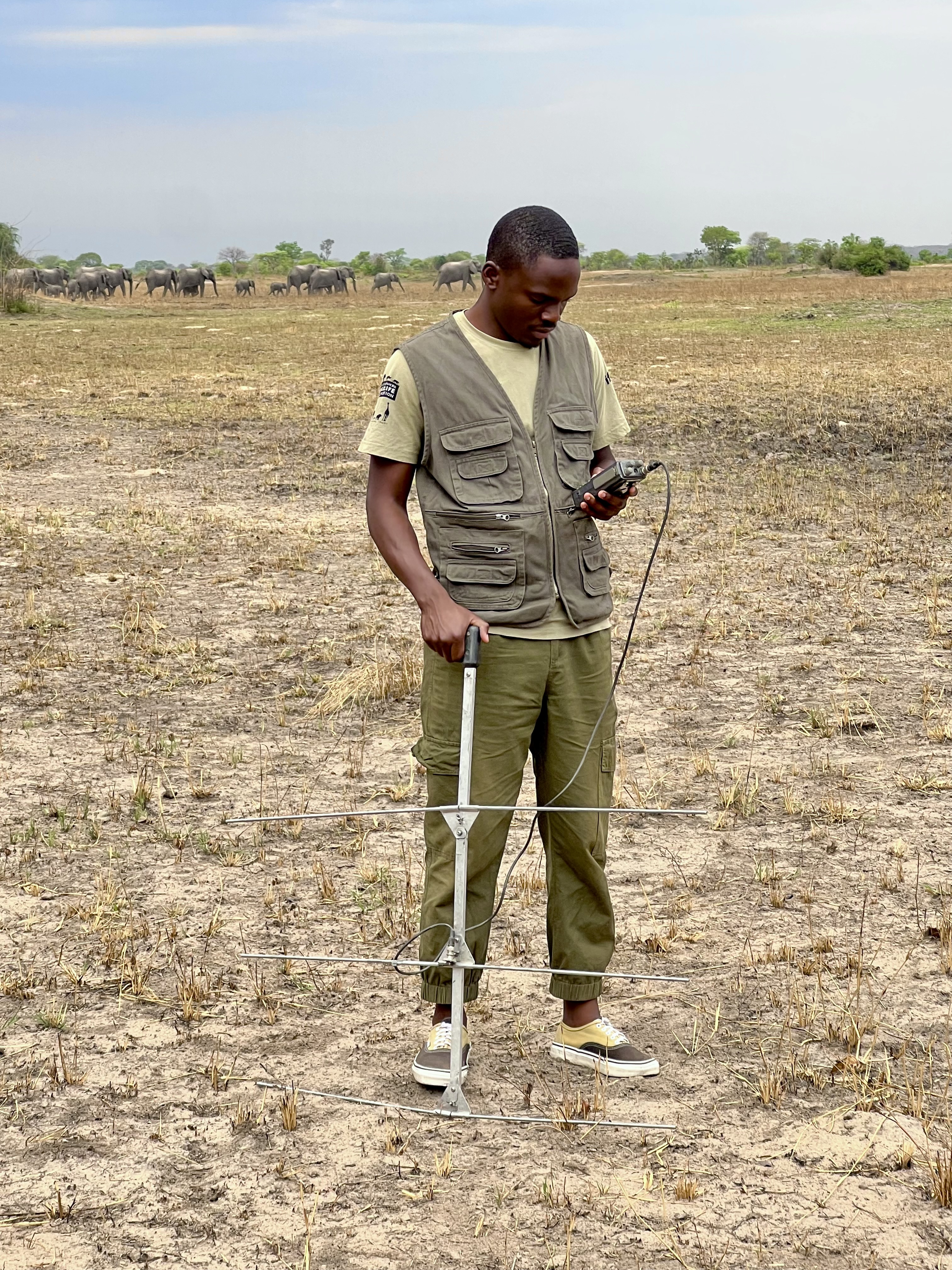
















2 March 2025 11:34am
Thank you for this valuable information!
Some of the features you mentioned can be quickly added to Loko, while others require more consideration. Loko’s communication is one-way—meaning the transmitter doesn’t know whether the receiver has received the data. This design choice is made to conserve battery life. However, all data is logged internally and can be accessed via USB.
I will add GeoTIFF loading to the Loko App. Currently, Loko is not suitable for wildlife tracking because it is not waterproof, but I am working on improving its mechanical design.
Loko already supports multiple connections, allowing many transmitters to connect to a single receiver or/and multiple receivers.
Regarding encryption: What do you mean by "Encryption should not be optional"?
Are you suggesting that communication should always be encrypted by default? on loko I made it user-configurable because encrypted data packets are 32 bytes, whereas unencrypted ones are 18 bytes. A smaller data packet improves reception sensitivity and extends the transmission range.
In your opinion, what would be a reasonable price for such a device? This is very important when adding new hardware features.
Cheers,
Akio)